WEF - Global Risks Report 2023
The World Economic Forum published last week the Global Risks Report 2023. Here are the main results.
Available in:
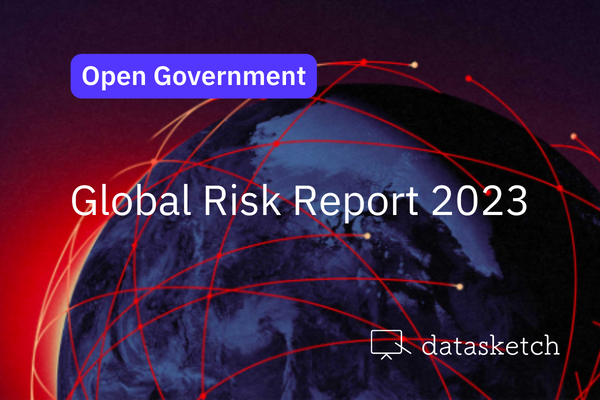
By Laura Tamia Ortiz Chaves.
The World Economic Forum published last week the Global Risks Report 2023. The document references the results of the Global Risk Perception Survey (GRPS) and gives an overview of the perception of society’s risks. More than 1,200 academic experts, business people, the international community, and civil society from 121 countries were consulted on “global risk.”
What is a global risk?
For the report, it is understood as “the possibility of the occurrence of an event or condition which, if it occurs, would negatively impact a significant proportion of global GDP, population or natural resources.”
How global risk perception is measured
The Global Risk Perception Survey includes 32 political, social, economic, technological, and environmental factors, measured from the following components:
- Outlook: invited respondents to predict global volatility to provide context to the evolution of the global risks landscape.
- Severity: assessed the perceived likely impact of global risks over a one-, two- and ten-year horizon to illustrate the potential evolution of individual global risks over time.
- Consequences: asked respondents to consider the potential impacts of a risk arising, highlighting relationships between global risks and the potential for compounding crises.
- Risk preparedness and governance: invited respondents to assess the current effectiveness of global risk management and to reflect on which stakeholders are best placed to manage risks effectively to spark opportunities for global action and collaboration.
- Qualitative risk questions: drew on expert knowledge to identify new and emerging risks.
The report complements this data with data from the World Economic Forum’s Executive Opinion Survey (EOS) when considered in the context of GRPS. This makes it possible to identify the risks that pose the most serious threat to each country over the next two years. It gives insight into local concerns and priorities and pinpoints potential “hot spots” and regional manifestations of global risks.
What are the findings of the report?
In the short term, i.e., two years, the global risks perceived to be of greatest concern are the cost of living, natural disasters and extreme weather events, and geo-economic confrontation. However, if we extend this period to 10 years, environmental risks become more relevant.
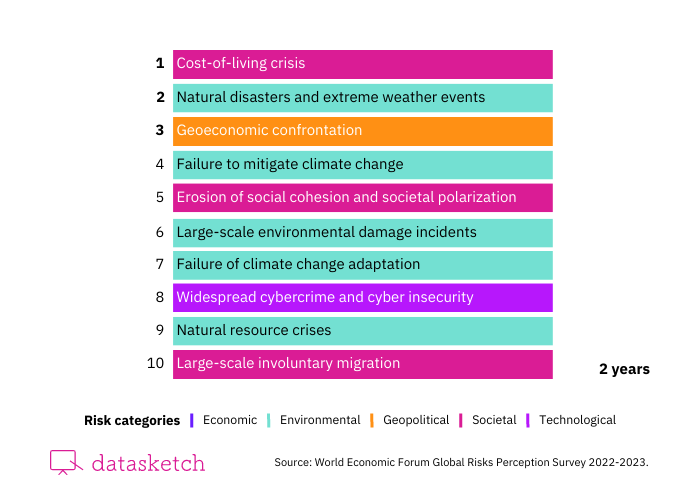
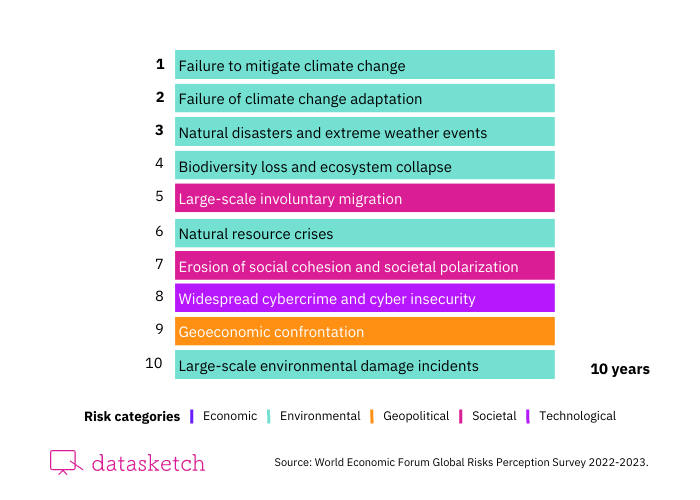
The only two risks that are not repeated in these two lists are the cost-of-living crisis, which is presented as the main problem in two years and is a clear sign of current economic concerns, but which drops to 15th place in the 10-year list, and the loss of biodiversity and the collapse of ecosystems, which are of greater concern in the long term.
On a closer look, the report shows that situations such as the war in Ukraine, widespread inflation, the cost of living, and problems with electricity supply are already on the agenda for 2023.
Some of the issues highlighted in the report relate to how the most recent crises aggravate social vulnerabilities. It notes that declining investments in human development erode long-term resilience and that technology can increase social inequalities. It also warns, using different graphs, about the risks of poly-crises, i.e. simultaneous crises in diverse areas.
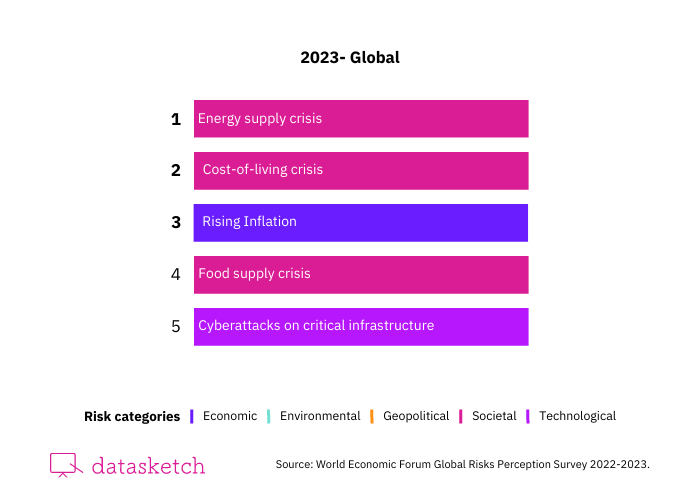
The report contains the results of the five most essential risks for each of the 121 countries included in the study. In Latin America, for example, countries such as Colombia, Argentina, Brazil, Spain, Portugal, and Mexico show great concern about rapid and/or sustained inflation. Other responses fit the current situation of the countries in a precise way. For example, in Peru, the greatest concern is the fear of a collapse of the State, which is currently reflected in the recent change of presidency and in the demonstrations that are taking place throughout the country.
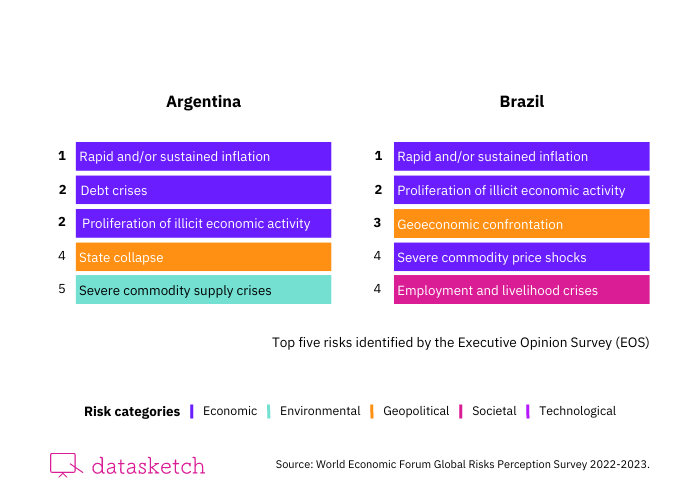
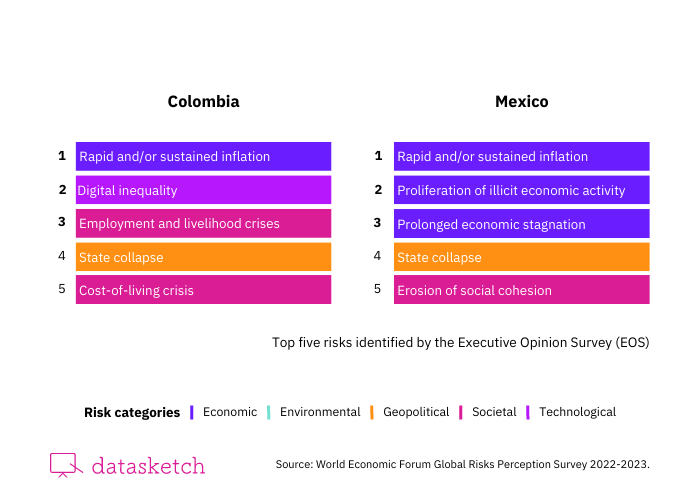
What can we do to mitigate risks?
Knowing and recognizing the risks identified can help us make decisions and take action proactively from a global, adaptive, and innovative vision. The response to current crises and mitigation for the future must involve society as a whole, including companies and individuals.
Three areas where companies and organizations can have a major impact are: investing in green energy, climate, and nature, improving the health and well-being of workers, and investing in maintaining the safety of the digital environments to which they are exposed.




